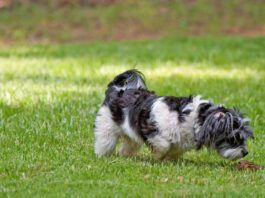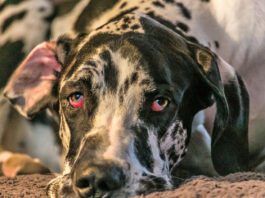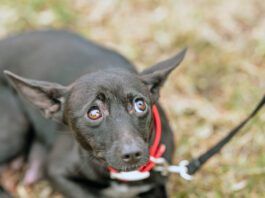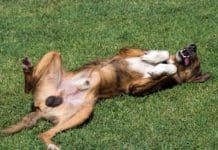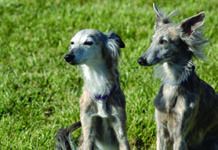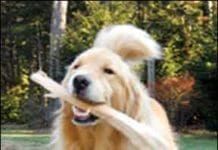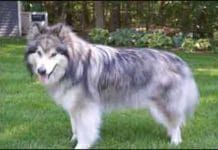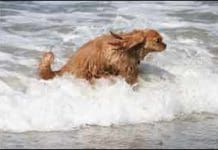Budget Medications
Purchasing prescription medicines for your dog from your veterinarian is definitely convenient and often necessary from a health standpoint (for example, when your pet urgently needs the drug), but it is usually the more expensive option. The mark-up at veterinary offices usually starts at 100 percent over wholesale prices but it can be 1,000 percent in some cases!
A Professional’s Take on Neutering Your Dog
Jennifer Mieuli Jameson, founder of Loup Garou, a San Francisco group that rescues black and dark-colored companion animals, went to law school, so she understands that there are always two (and usually more) sides to a story. Jameson respects the validity of the debate over early spay/neuter.
Risks and Benefits to Spaying/Neutering Your Dog
When we talk about dogs, invariably we talk about dog people. The human desire to group things that interest us and build commonality among kindred spirits is hardwired - as is our tendency to segregate and highlight differences. As a result, dog people may identify as belonging to as many different canine communities as there are breeds. And within those "tribes," we have mores, and values, and politics - and not all of them are compatible.
Keeping Your Dog Intact
If you decide to delay spaying or neutering your dog, for whatever length of time or whatever reason, here is something else to consider: Some people just may not be cut out to deal with an intact male or female dog in their household. Here are some caveats and considerations.
An Old Infectious Disease Is New Again
It’s baaaaack. News that infectious canine hepatitis surfaced in New England this summer is not exactly on par with the possessed television sets and otherworldly bedroom-closet portals in the 1980s horror flick “Poltergeist.” But the fact that the disease – formally known as canine adenovirus-1, or CAV-1 – has materialized in the United States is likely to induce goosebumps in those who have opted to not vaccinate against it, thinking it was essentially obliterated in the American dog population.
Dogs with the MDR1 Mutation: Drug Sensitivities
Most dog owners are aware that Collies and other herding breeds may be sensitive to ivermectin, used for heartworm prevention and to treat certain parasites. But did you know that these dogs can also be sensitive to a number of other drugs, and that other breeds can also be affected?
Best Treatment Options for Canine Lipomas
Uh-oh. What’s this lump? Any growth on your dog’s body deserves attention, especially one that wasn’t there last time you checked. It could be a sebaceous cyst (a sac filled with sebum, a cheesy or oily material, caused by clogged oil glands in the skin), an abscess (a pus-filled swelling caused by infection), or – everyone’s worst nightmare – a cancerous tumor. But in most cases, the lumps we discover as we pet and groom our dogs are lipomas, which are benign (non-cancerous) fat deposits, also known as fatty tumors. An estimated 1.7 million dogs are treated in the United States for lipomas every year, and according to one survey, American veterinarians average 25 lipoma removals annually at a cost to owners of $635 million. Lipomas tend to emerge as dogs reach middle age and increase in number as dogs get older. A dog with one lipoma is likely to get more. Lipomas are most often found on the chest, abdomen, legs, or armpits (axillae). These fatty lumps aren’t painful and they usually stay in one place without invading surrounding tissue.
Older Dogs and Surgery
Some are reluctant to perform surgery on old dogs because of anesthesia risks or complications, but these risks are minimal in the case of most lipomas. Modern anesthesia protocols are far safer than they used to be, and complications are generally minor, usually limited to superficial infection or delayed healing. There is no reason not to remove lipomas from older dogs when they interfere with their quality of life.
Novartis Brand Canine Drug Shortages Continue
Novartis Animal Health suspended production at its Lincoln, Nebraska, plant in December 2011 following a series of warnings from the U.S. Food and Drug Administration (FDA) regarding manufacturing and quality control violations. At that time, the only veterinary drugs affected were the heartworm and flea products Interceptor, Program, and Sentinel. Novartis said it hoped to return to full production in January. Instead, further problems were discovered when Novartis warned veterinarians about possible tablet mix-ups in bottles of Clomicalm, used to treat separation anxiety. On January 5th, Novartis sent a letter to veterinarians informing them that it was suspending production and shipments of Clomicalm and Milbemite (used to treat ear mites) in addition to the products listed above.
How to Get Your Dog to Take His Pills
My Border Collie Daisy trained for the world record in the hack put" event. This soon-to-be Olympic sport involves hacking pills from the back of the throat as far as possible across the room. Her record is 1.2 meters
Properly Diagnosing Canine Hypothyroidism – What are the Signs?
You probably know someone with an underactive thyroid gland; in fact, you may have one yourself. The signs of hypothyroidism in humans include a subnormal body temperature, cold hands and feet, weight gain, hair loss, and constant fatigue. People aren’t the only ones afflicted by this disorder, for many dogs are hypothyroid, too. They may seem lethargic, gain weight while eating normal or below-normal amounts of food, seek warmth, and develop skin and coat conditions. But hypothyroidism causes other symptoms, too, and an accurate diagnosis can require thinking outside the box.
When to Seek Veterinary Care After Your Dog Has a Close Call at the...
Did Your Dog Have a Scary, Sinking Moment in the Water? “If the dog comes out and he’s fine, he’ll shake it off,” says Jules Benson, DVM. “You need to watch him for the next 24 to 48 hours, because that’s when aspiration pneumonia (caused by water going down into the main-stem bronchi) can occur. Especially if it’s water other than a pool, where there could be bacteria or protozoa in the water. If they aspirate any of that and it goes into the lungs, the bacteria spreads and multiplies.



